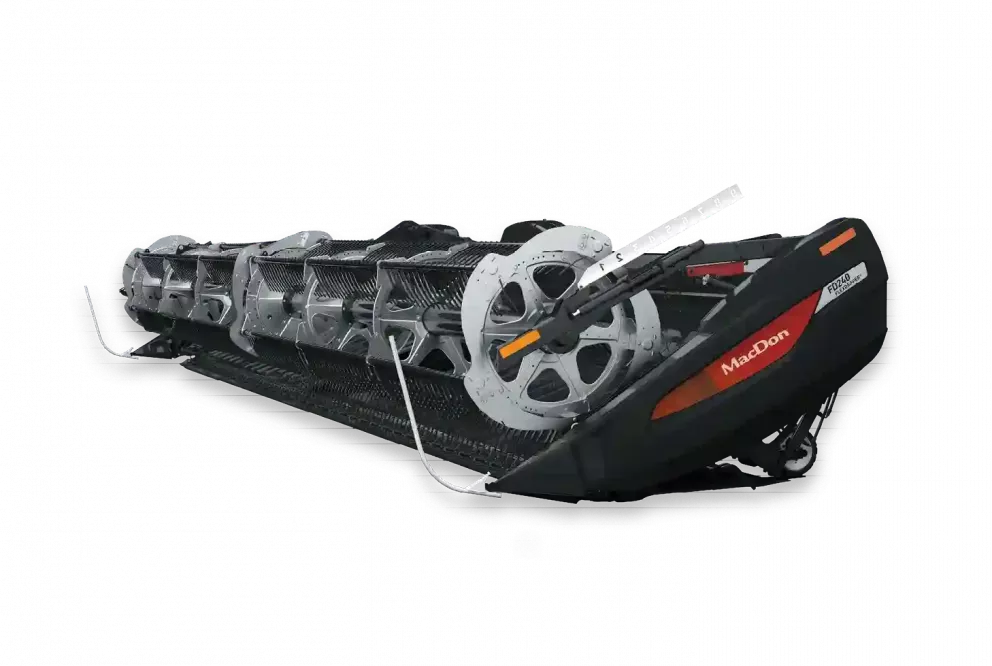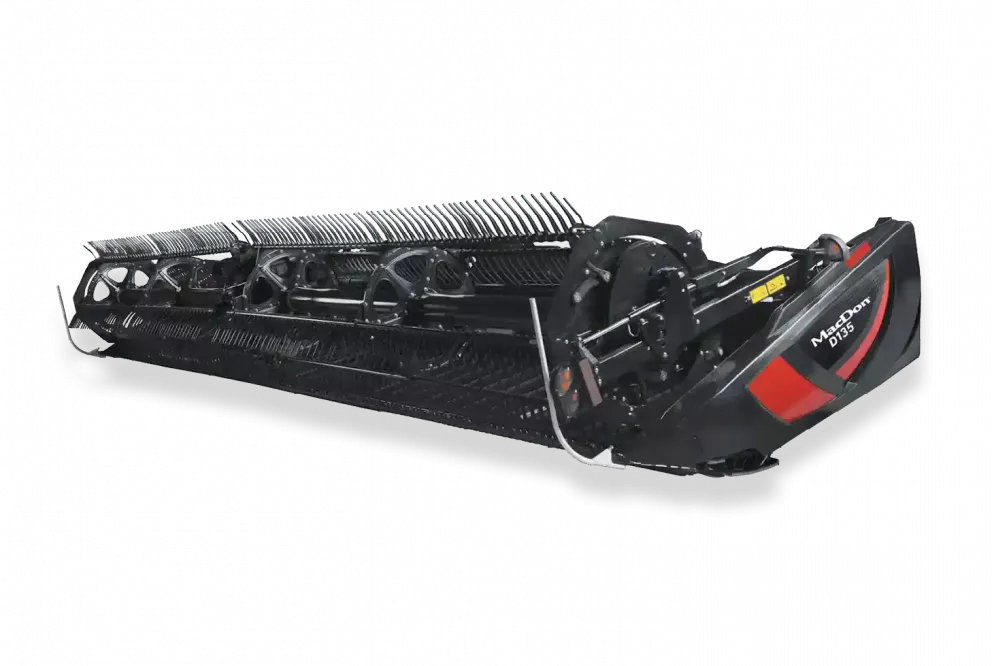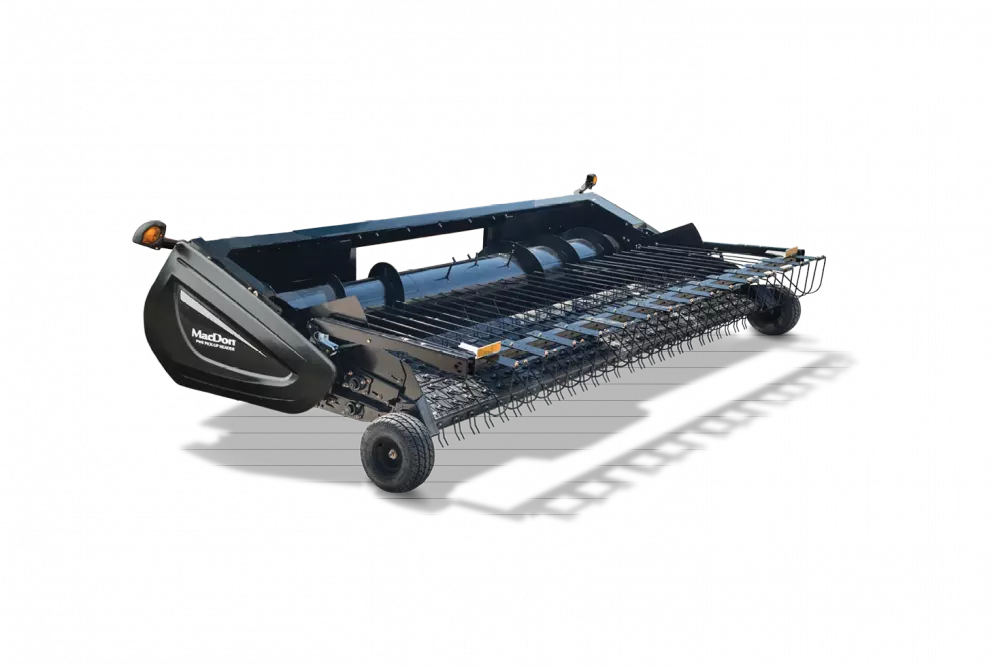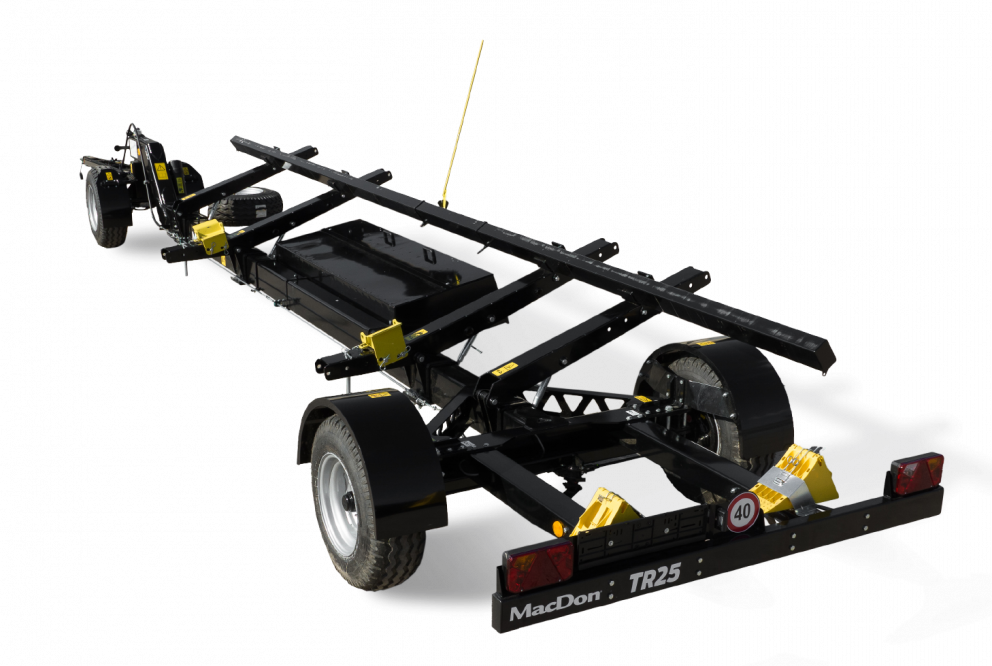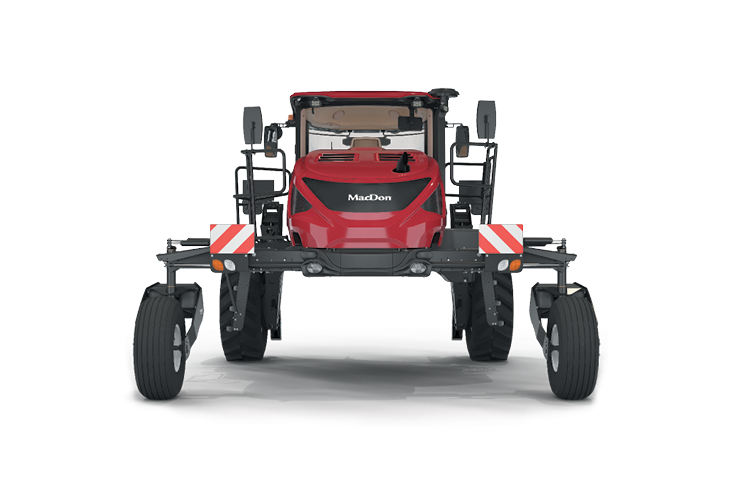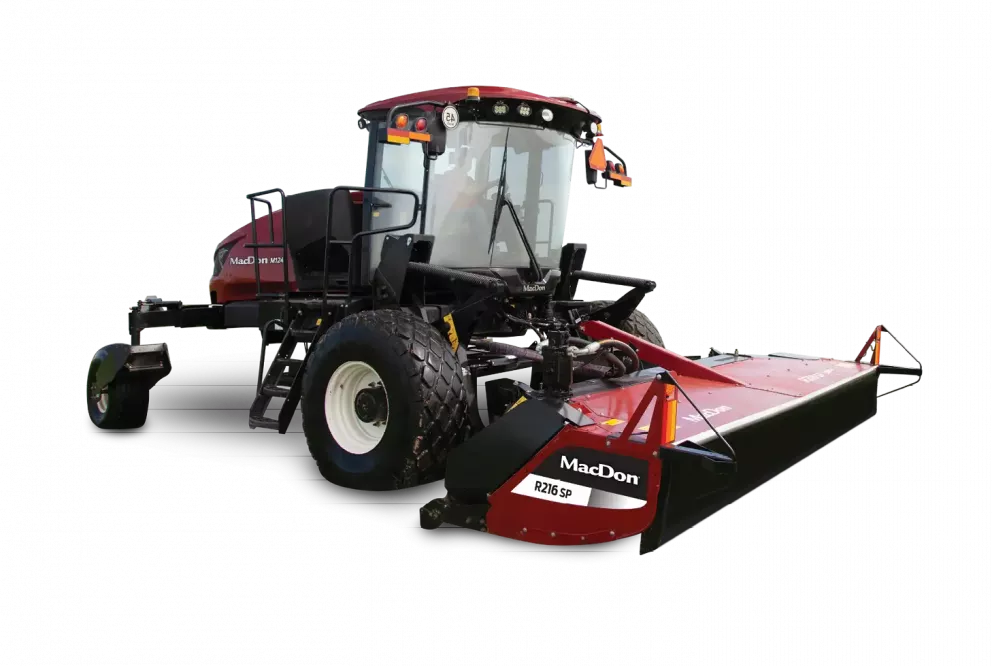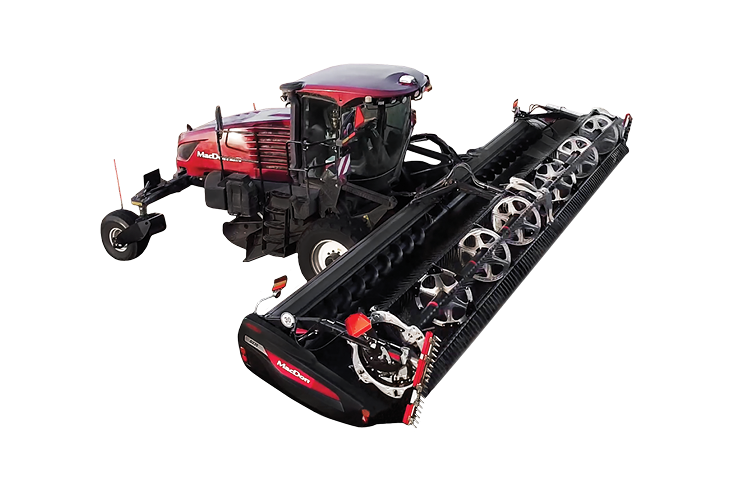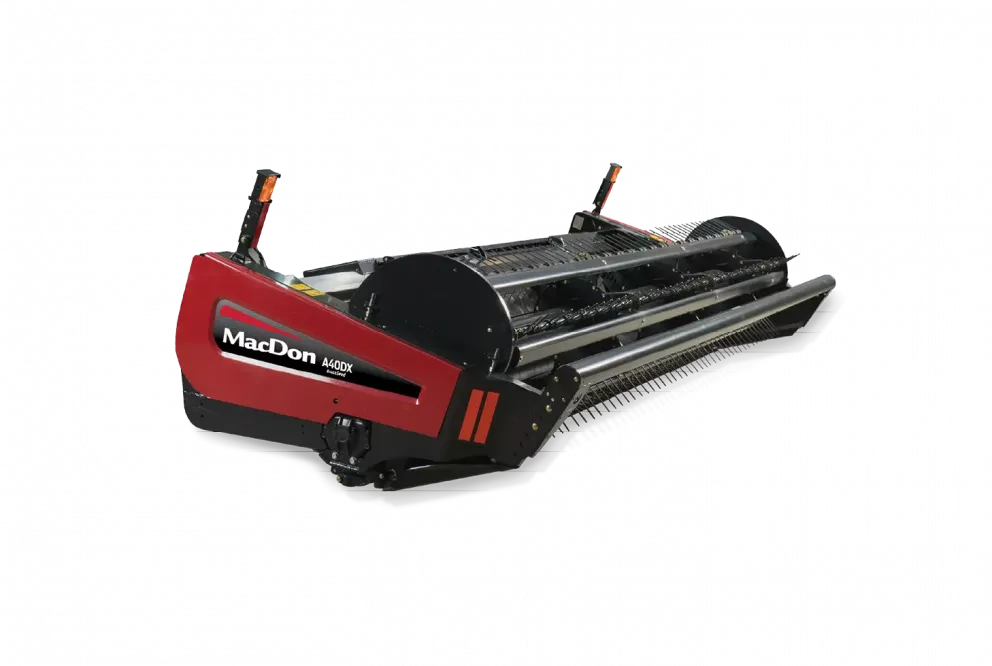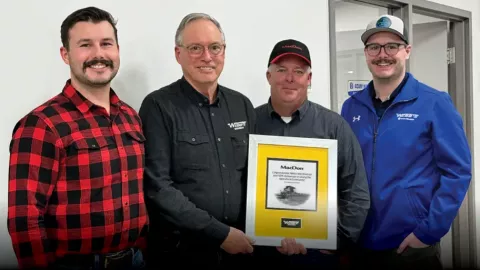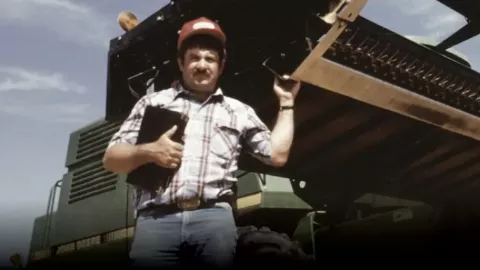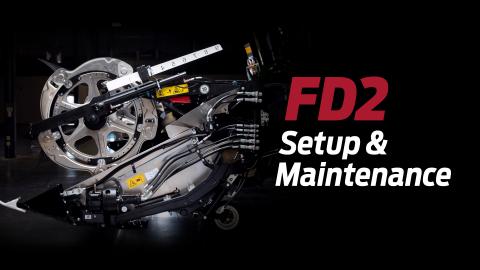Trailblazer
Mike Wagner was the first in Mississippi to use a MacDon draper. Now, everyone has them.
I HAD DREAMED OF A MACHINE LIKE THAT FOR YEARS, AND WAS BUSY TRYING TO INVENT ONE.
It was his frustration harvesting peas that prompted Mike Wagner – a Mississippi rice and soybean farmer and recent President of the Mississippi Rice Growers Association – to first buy a MacDon draper header back in the mid ’90s. Chemical restrictions set by the USDA, often meant that his peas often grew up in a carpet of morning glories, barnyard grass, brachiaria, broadleaf weeds and “who knows what else.”
“Sometimes, there was literally a four inch (101.6 mm) layer of morning glories over top of the peas,” said Wagner whose 4,000 acre (1,618.7 hectares) farm is located near Sumner, Mississippi, in the Mississippi Delta. “You might be able to drive five feet (1.5 m), 50 feet (15.2 m) or 500 feet (152.4 m), but sooner or later you would soon choke your auger up and have to get out with a hookbill knife and cut all that refuse off to get going again.”
But Wagner knew there must be a better way.
“I would look at the old drapers made by Case IH or International Harvester and knew that a draper was the answer. I had dreamed of a machine like that for years, and was busy trying to invent one.”
But then he heard of a MacDon draper header being sold in Arkansas so he traveled there to investigate. What he found pleased him greatly.
“MacDon had beaten me to it, and I was glad because what I saw was definitely a lot better than I could have done. I didn’t care what they charged for the header; I bought it on the spot.”
Wagner says the draper immediately proved its worth, not just in peas but also rice and soybeans. Because of the way it cut and fed so evenly, it eliminated a significant portion of the slugging that had been causing him so much grief, particularly in rice. Gone were the days of having to frequently stop to cut material from the header.
“It brought my blood pressure down. I wasn’t getting so frustrated anymore.”
He also noticed another significant benefit when the crop was damp.
“We have such heavy dews here. The extra moisture won’t allow the crop to slide against the metal on the table easily, so it just piles up. But with these MacDon drapers the backside of the cutterbar is literally four or five inches away from the belt so that when you cut that head off it just topples back onto the belt; it can’t help but feed evenly. Extra moisture wasn’t a problem. Once we were able to figure out what it could do, it allowed us to start earlier in the morning and cut an extra 30 minutes at night – you could just keep cutting if you wanted to.”
The benefits of his new header were so dramatic Wagner couldn’t keep the secret to himself.
“There were a lot of people who came from across Mississippi to ride with me to see that header over the next five years. They noticed how it almost eliminated the slugging and allowed us to harvest quicker, 20% to 30% more a day – sometimes 100% more under the right conditions.”
The draper concept began to take hold and Wagner started seeing a lot of them in Arkansas and Mississippi – all of them MacDons. But there were still holdouts committed to their augers. It would take
an event as big as Hurricane Katrina to convert the rest.
“It was a horror story in 2005. Five days before Katrina we had a storm with several inches of rain and straight line which blew most of the rice over. Then Katrina hit dumping I don’t know how many inches of rain on us. That finished laying the rest of the rice down in the water, completely lodging it and causing some of it to sprout. Two and a half weeks later Hurricane Rita come through.”
For most producers still harvesting with augers, the crop was lost. But for those like Wagner, lucky enough to have MacDon drapers, the experience was different.
“The rice was flat on the ground with the heads layered on top of the mat of straw just above the water table. It was a mess but we were able to set our MacDon headers at water height and get most of those heads.”
“That experience turned many non-believers into believers and many people who felt that they didn’t have the finances to purchase a new MacDon draper, found the money to buy them after those two hurricanes. Today I can not think of a single person within a 30 mile (48.3 km) radius that uses an auger header on a combine in rice, soybeans or wheat. There’s just none left.”
Wagner says that one of the most noticeable effects of Mississippi's draper revolution has been a reduction of the number of pieces of machinery on most farms. Wider drapers have made possible the use of larger combines, and now most producers require just one combine for their harvest, whereas two used to be the norm for a 1,000 acre (404 hectares) operation. The multi-crop versatility of a MacDon draper has also had an impact.
“At one time two headers for each combine was standard operating procedure. We had a rigid rice header, and we had a flex header. Now, no one uses two headers; we’ve all cut back to one header.”
With 4,000 acres (1,618.7 hectares) of rice and soybeans to cut, Wagner still uses two combines for his harvest. One of them is equipped with MacDon’s 40' (12.2 m) FD70 FlexDraper®. Between it’s enormous width and advanced harvesting capabilities, Wagner says that it is truly a machine to marvel at.
“The combination of width, flex, ground sensitivity, even feeding and gentle crop handling; no one else is able to do that. Its the way MacDon is able to bring all the features together in one machine that makes the FD70 so great. It’s also why MacDon has sold so many headers in Mississippi.”
He says the gentle harvesting abilities of the FD70 (which can result in significantly reduced shatter) were demonstrated well in this year’s soybean crop, the result of one of the “weirdest” growing seasons he can remember.
“I had places where we had $200 of beans an acre already popped on the ground. We were cutting beans that were popped out, and we were still throwing green beans into the hopper. If we’d had a flex auger header out there trying to do what we were doing we would have left a lot on the ground. The difference may have been two, three – even four – bushels an acre. ”
Another thing that he really likes about MacDon’s FlexDraper® concept is the way it reduces dust in an extra dry crop like his soybeans this year.
“The MacDon draper cuts down on dust by 60% or 70%. That’s because there’s less crop bumping around up against that auger all of the time.”
Given Wagner’s love for his new FD70 you can be forgiven if you are a little bit shocked to discover that the header on his other combine is going into its 17th year of service with his operation. Purchased in 1997, this 25' (7.6 m) MacDon 972 Draper is now mounted on its fourth combine, with no sign of slowing down.
“It’s as good a piece of machinery that I’ve ever bought in my life, I kid you not. It just keeps going on and on and on and on. I’d like to buy a new one but I don’t see any compelling reason to change, it’s still doing the job I need it to do. If you’re interested in a new MacDon header, I can certainly tell you how long it’s going to last.”
